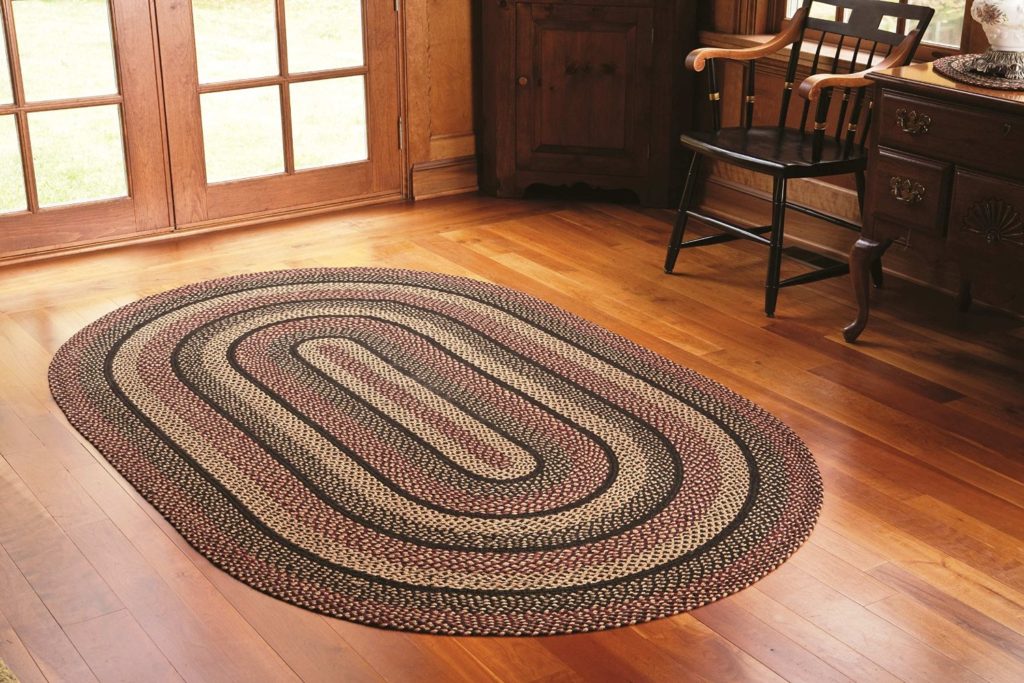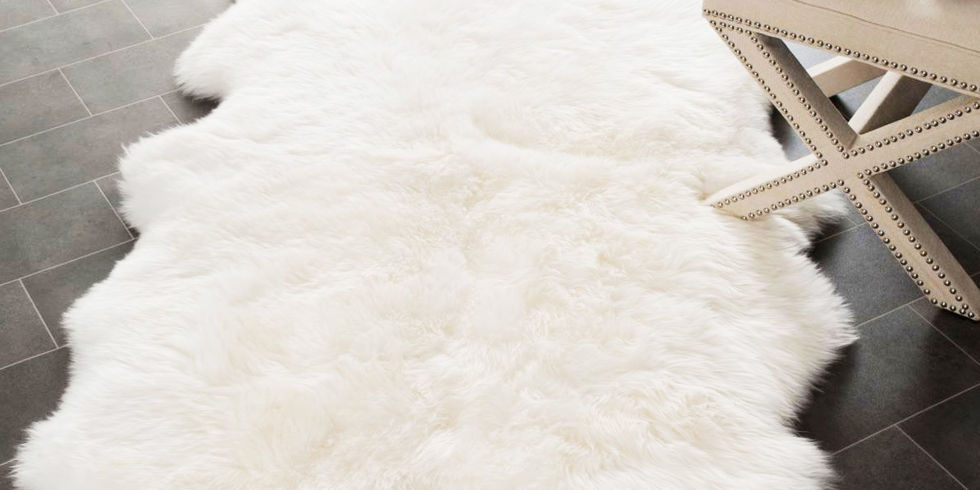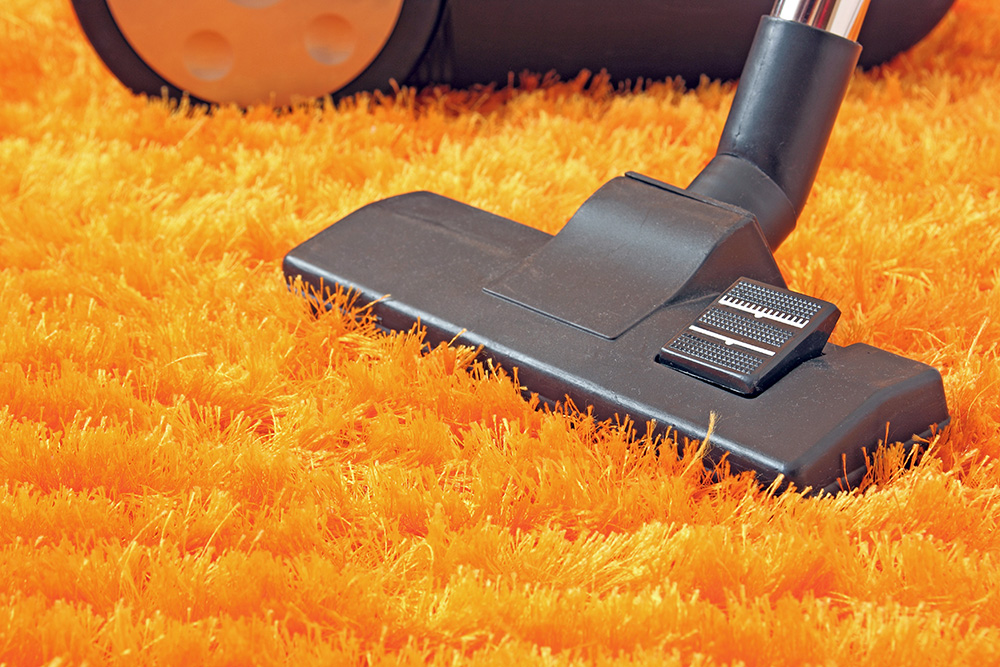Area rugs can really bring a space to life, providing comfort, style and warmth. You can dramatically upgrade or enhance a room, with just the addition of a new floor piece. While they can do a lot for you and your home, it is important that you know how to properly care for them. If well maintained, your area rugs will continue to add to your home for years to come.
Below are a few tips regarding basic rug care. (Rug Care is determined by factors such as size, construction as well as material.)
Basic Care Tips
Tip #1:
Storage – When storing an area rug for a period of time greater than 6 weeks, we suggest having it professionally cleaned and wrapped in Tyvek. This keeps the rug protected from damage caused by bugs or moths. Additionally, it is important the rug is stored in a dry space so as to avoid damage caused by moisture.
Tip #2:
Tags – After buying a new area rug, make sure to keep the tags on the back of the rug on back — mainly the tag illustrating how to care for the rug. If you must remove the tag, be sure to file it away so that you can refer to it when necessary.
Tip #3:
Large Rugs – Depending upon the construction, and/or stains present, large-sized machine-made area rugs can likely be cleaned and cared for the way you would wall-to-wall carpet. However, high-end handmade area rugs require professional rug cleaning at a wash facility.
Tip #4:
Small Rugs – Small sized area rugs are often quite difficult to vacuum. In order to make the process a bit easier, first take these rugs outside and give them a good shaking. Shake until all the dust and dirt is no longer visible to the eye. (Keep in mind that some cities have ordinances against this.) If necessary, hang the rug on a clothesline, or wall, then beat it with a broom to remove any excess dirt.
Tip #5:
Dry Cleaning – Even as rug cleaning specialist, we always refer to the care label on small rugs, in order to determine whether the rug should be dry-cleaned, spot-cleaned or laundered. If the label specifies that the rug is dry-clean only, please follow these instructions. If not dry-cleaned, the colors within the area rug may begin to bleed. Regardless, we always recommend that you test the colors and fibers of a small area before spot cleaning the entire rug.
Tip #7:
Drying Wet Rugs – To dry your large rug, we suggest hanging it over a clothes-drying rack, or from your patio using several heavy bricks. It important that the area the rug is hung in, has a relatively nice breeze to speed up the process. Keep in mind that hanging a wet rug over one individual clothesline will distort the shape of the rug. When drying smaller rugs that are made from synthetic fibers, place a sheet or towels on a small worktable or counter, and lay the rug on top to dry.
Tip #8:
Pet Hair, Stains and Odors – When pet hair begins to gather on an area rug, we suggest forcefully brushing the rug with a stiff utility brush. Going with the direction of the pike, brush until the dirt or hair is no longer visible. If your pet has soiled your area rug it is evident to tend to this stain immediately. Utilizing a store-bought spot cleaner, spray the affected area and blot with a clean, dry terry cloth.
There are a variety of different materials and methods used to make area rugs. If you purchase a rug at an antique show, flea market, or garage sale, make sure to find out all you can about the fibers and construction of the rug, and the recommended cleaning techniques for it.
Below are care instructions for some of the most commonly used area rugs in decorating.
Woven and Braided Rugs

When caring for woven and braided rugs, we recommend that you first check for stitching breaks before cleaning. Additionally, check any associated care labels to determine whether the particular area rug is washable.
Oriental Rugs
When it comes to handmade, antique and oriental rugs, you should vacuum them just as you would wall-to-wall carpet. If the rug is delicate, follow the below guidelines to properly care for it.
Vacuuming: Lay a piece of nylon screen on the top of the rug and weight down its edges using heavier books or bricks. Then, gently vacuum over the nylon screen. The vacuum will remove the dirty while the screen protects the rug from the vacuum. Alternatively, you could tie nylon mesh over the vacuum attachment, creating a screen on the vacuum itself. If you choose this alternative method, be sure to change the nylon mesh frequently as dirt accumulates.
Stains: Immediately treat spills caused by wine, or other beverages, with club soda. If the spill was caused by gravy, sauces or liquid foods, use baking soda to treat the area. Contact Refined Rug Restoration for a more complete list of food stain removal tips. If the area rug sustains heavy traffic, be sure to have it professionally cleaned as needed. If there is an extreme stain or one caused by pet urine/feces, immediately take your rug to a wash facility to be professionally cleaned.
Rug Rotating: Rotate your rugs often — especially those in high-traffic areas — to ensure that the area rug wears more evenly. Additionally, it is important to rotate your rug as direct exposure to sun will cause your rug to fade. Be sure to install appropriate window coverings, or tint, to protect valuable rugs from sun exposure. If this is not possible, place your rug in a space with less sun exposure.
Coir and Sisal

Rugs made from coir (coconut), sisal, grass, and other natural materials have a relatively open weave, allowing dirt to sift through the rug to the floor beneath it. Vacuum these rugs frequently, so as to avoid the dirt sifting through. Remembering that water weakens the fibers, when tending to stains, work quickly and dry thoroughly in order to avoid damage to the rug.
Vacuuming: Having mentioned that dirt can sift through, it is important to vacuum the floor beneath the rug as well as the rug itself. If possible, take the rug outside and gently beat it to loosen any dirt trapped within the fibers. If your rug is reversible — which many are — flip rugs often for even wear.
Stains: To tend to any stains or discolorations, place something such as a towel, or plastic drop cloth, underneath the rug to protect the floor. (If your rug is small enough, you can simply move the rug to a protected table or counter space to clean.Move small rugs to a protected counter or table to clean.) Using a soft brush, dipped in soapy water, scrub the stain until the spot is gone. Next, rinse the area with clean water, and blot with a towel to dry. If possible, use a fan or hair dryer to speed up the drying process. It is important to get the rug as dry as possible.
Sisal Saver Tip: Some natural fiber rugs are constructed by sewing several different squares together. In case of potential damage, we suggest buying a few extra squares, or a smaller version of the rug. Then, if a particular square is stained or damaged, the threads that hold it together, can be cut and a new square can be hand-stitched in its place.
Fur and Sheepskin

To clean, shake unscented talcum powder over the fur, hide or sheepskin rug and leave for several hours. Brush the talcum powder through the hair and proceed to shake it out. Depending upon the length of the fur, with longer fur needing a deeper cleaning, repeat this process several times. Additionally, dip a clean cotton cloth in lukewarm soapy water and gently wipe off the back of the rug. Then wipe the rug down with a cloth dipped in clean water. Set out to dry before placing back on floor.
For all other area rug tips, cleaning questions or design ideas, be sure to visit: http://refinedrugrestoration.com/blog/

